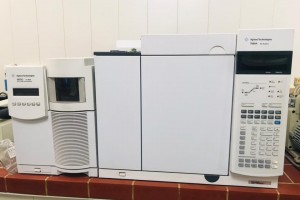
The College of Education for Pure Sciences, Department of Chemistry, University of Basra, discussed a higher diploma thesis on (preparation and diagnosis of some metallic complexes, cyclic compounds, and the study of their biological activity)
The message, which was administered by the researcher (Jamal Jassim Muhammad), included three parts:
Part One: Preparation of a new azo-beta diketone compound, a new klikand. The indirect method was used to prepare the azo compound (J). The azo-beta-diketone compound was prepared in two steps, the first of which included the process of preparing the diazonium salt (nitrification) of the amino sulfaguanidine.
The second step was carried out to obtain the required azo compound, in which the diazonium solution was gradually added with constant stirring to the dibenzoylmethane solution.
It was diagnosed using the micro-analysis technique (CHN), and the results of the analysis showed the great agreement between the theoretically calculated and practically obtained ratios, which gave support to the proposed molecular formulas. It was also diagnosed using the proton nuclear magnetic resonance (1H-NMR) technique, in which the most important signals expected for the protons of the main groups constituting the lycand appeared. The preparation and infrared technology (FT-IR), as the most important active groups present in the dye were diagnosed.
The second part: The prepared complexes were characterized using FT-IR spectrophotometer. In addition to studying molar conductivity and magnetic sensitivity.
The prepared azo compound is a two-tooth type (N,O) calycand wire with copper(II) and nickel(II). The correlation ratio was 1:2.
Study explained
The molar conductivity of the two complexes is that they are non-electrolyte, that is, they do not have an ionic part outside the coordination sphere. As for the magnetic sensitivity, it was shown that the two prepared complexes possess paramagnetic properties.
Depending on the results of measurements of molar electrical conductivity and magnetic sensitivity and the results of the microanalysis of the elements and the detection of the absence of ions outside the coordination ball of the two chelating complexes prepared in our study and the data of infrared techniques, micro-elemental analysis, electrical conductivity and magnetic sensitivity, the octahedral stereotype of the copper ion complex was proposed (II) Record.








